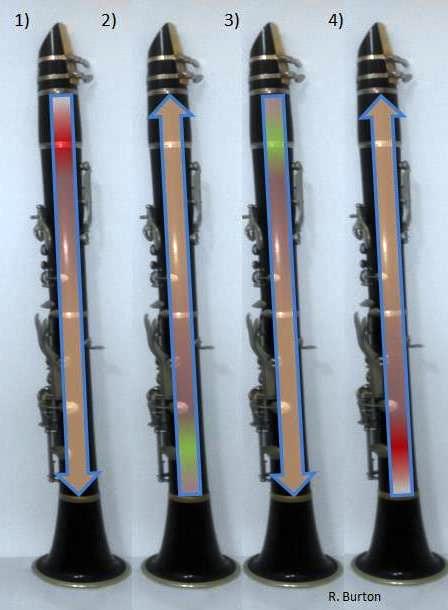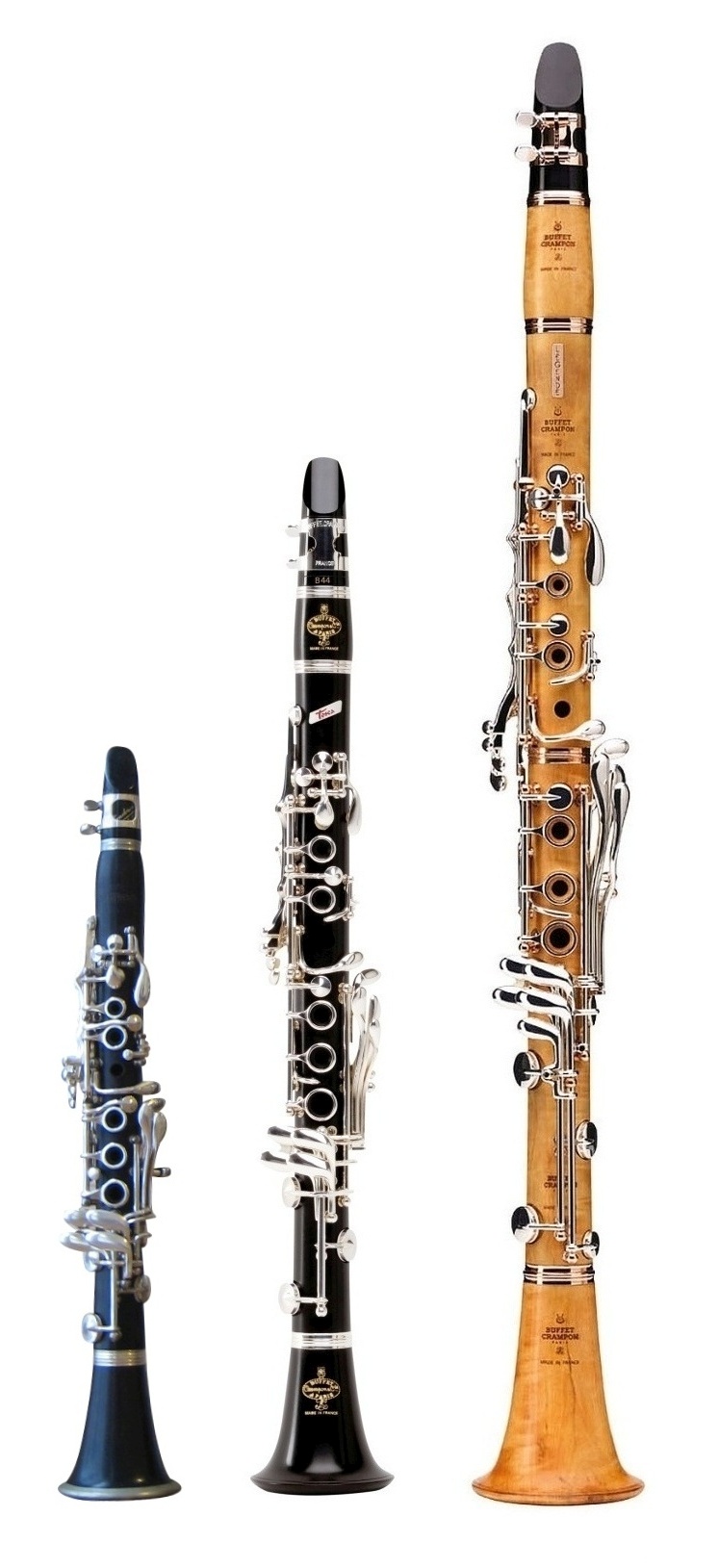|
List Of Transposing Instruments
This is a list of transposing instruments and their transposition. Transposing instruments are instruments for which the convention is to write music notation transposed relative to concert pitch. See also * Transposing instrument References Further reading * Kennan, Kent Wheeler. ''The Technique of Orchestration'', Second Edition. Englewood Cliffs, New Jersey: Prentice-Hall, Inc., 1970, 1952; * Del Mar, Norman. ''The Anatomy of the Orchestra''. University of California Press, 1981 {{DEFAULTSORT:Transposing Instrument Musical instruments ... [...More Info...] [...Related Items...] OR: [Wikipedia] [Google] [Baidu] |
Transposing Instruments
A transposing instrument is a musical instrument for which music notation is not written at concert pitch (concert pitch is the pitch on a non-transposing instrument such as the piano). For example, playing a written middle C on a transposing instrument produces a pitch other than middle C; that sounding pitch identifies the interval of transposition when describing the instrument. Playing a written C on clarinet or soprano saxophone produces a concert B (i.e. B at concert pitch), so these are referred to as B instruments. Providing transposed music for these instruments is a convention of musical notation. The instruments do not transpose the music; rather, their music is written at a transposed pitch. Where chords are indicated for improvisation they are also written in the appropriate transposed form. For some instruments, a written C sounds as a C, but is in a different octave; these instruments are said to transpose "at the octave". Pitches on the piccolo sound an octave ... [...More Info...] [...Related Items...] OR: [Wikipedia] [Google] [Baidu] |
Alto Clarinet
The alto clarinet is a woodwind instrument of the clarinet family. It is a transposing instrument pitched in the key of E, though instruments in F have been made. In size it lies between the soprano clarinet and the bass clarinet. It bears a greater resemblance to the bass clarinet in that it typically has a straight body (made of grenadilla or other wood, hard rubber, or plastic), but a curved neck and bell made of metal. All-metal alto clarinets also exist. In appearance it strongly resembles the basset horn, but usually differs in three respects: it is pitched a whole step lower, it lacks an extended lower range, and it has a wider bore than many basset horns. The range of the alto clarinet is from the concert G2 or G2 (in the second octave below middle C, bottom line of the bass clef) to E6 (in the second octave above middle C), with the exact upper end of the range depending on the skill of the player. Despite the broad range, the instrument is always scored in the treb ... [...More Info...] [...Related Items...] OR: [Wikipedia] [Google] [Baidu] |
Basset Horn
The basset horn (sometimes hyphenated as basset-horn) is a member of the clarinet family of musical instruments. Construction and tone Like the clarinet, the instrument is a wind instrument with a single reed and a cylindrical bore. However, the basset horn is larger and has a bend or a kink between the mouthpiece and the upper joint (older instruments are typically curved or bent in the middle), and while the clarinet is typically a transposing instrument in B or A (meaning a written C sounds as a B or A), the basset horn is typically in F (less often in G). Finally, the basset horn has additional keys for an extended range down to written C, which sounds F at the bottom of the bass staff. In comparison, the alto clarinet typically extends down to written E♭, which sounds G♭, one semitone higher than the basset horn. The timbre of the basset horn is similar to the alto clarinet's, but darker. Basset horns in A, G, E, E, and D were also made; the first of these is close ... [...More Info...] [...Related Items...] OR: [Wikipedia] [Google] [Baidu] |
Clarinet D'amore
The clarinet d'amore or clarinet d'amour is a musical instrument, a member of the clarinet family. Construction and tone In comparison with the B and A soprano clarinets, the clarinet d'amore has a similar shape and construction, but is generally larger, usually pitched in G. The clarinet d'amore has proportionally smaller tone holes and a proportionally smaller bore compared to the soprano clarinet, generally around the same size as the bore and tone holes found on the soprano clarinet itself. The instrument also has a pear-shaped or globular bell (called Liebesfuss) similar to that of the cor anglais; these features give the instrument its distinctive timbre. Due to their large size, they also feature a curved metal neck to bring the instrument to a more comfortable playing position, though instruments with curved wooden necks exist. Fingerings are generally the same as other members of the clarinet family, however modern examples often have an extension, like the basset h ... [...More Info...] [...Related Items...] OR: [Wikipedia] [Google] [Baidu] |
Basset Clarinet
, french: clarinette de basset; it, clarinetto di bassetto; , classification = Aerophon, clarinet-family , hornbostel_sachs = , hornbostel_sachs_desc = , inventors = Theodor Lotz and others , developed = around 1770 , range = 1. 2. 1. written 2. basset clarinet in A, playing , related = clarinet, clarinet d'amore, alto clarinet, basset horn , musicians = Sabine Meyer, Charles Neidich, Vlad Weverbergh, Sharon Kam, Martin Fröst, Shirley Brill , builders = Leitner & Kraus (instrument top), Schwenk & Seggelke (instruments in the middle and below), Buffet Crampon, Backun Musical Services, Stephen Fox (clarinet maker), Stephan Fox, :de: F. Arthur Uebel, FAU, Herbert Wurlitzer, Wurlitzer, Gerold-Clarinets The basset clarinet is member of the clarinet family similar to the usual soprano clarinet but longer and with ... [...More Info...] [...Related Items...] OR: [Wikipedia] [Google] [Baidu] |
Soprano Clarinet
A soprano clarinet is a clarinet that is higher in register than the basset horn or alto clarinet. The unmodified word ''clarinet'' usually refers to the B clarinet, which is by far the most common type. The term ''soprano'' also applies to the clarinets in A and C, and even the low G clarinet—rare in Western music but popular in the folk music of Turkey—which sounds a whole tone lower than the A. While some writers reserve a separate category of sopranino clarinets for the E and D clarinets,Nicholas Shackleton. "Clarinet", ''Grove Music Online'', ed. L. Macy (accessed 21 February 2006)grovemusic.com(subscription access). those are generally regarded as soprano clarinets as well. All have a written range from the E below middle C to about the C three octaves above middle C, with the sounding pitches determined by the particular instrument's transposition. Use of the terms ''soprano'', ''piccolo'', and ''sopranino'' is relatively rare and of debatable accuracy. The only ... [...More Info...] [...Related Items...] OR: [Wikipedia] [Google] [Baidu] |
Clarinet
The clarinet is a musical instrument in the woodwind family. The instrument has a nearly cylindrical bore and a flared bell, and uses a single reed to produce sound. Clarinets comprise a family of instruments of differing sizes and pitches. The clarinet family is the largest such woodwind family, with more than a dozen types, ranging from the BB♭ contrabass to the E♭ soprano. The most common clarinet is the B soprano clarinet. German instrument maker Johann Christoph Denner is generally credited with inventing the clarinet sometime after 1698 by adding a register key to the chalumeau, an earlier single-reed instrument. Over time, additional keywork and the development of airtight pads were added to improve the tone and playability. Today the clarinet is used in classical music, military bands, klezmer, jazz, and other styles. It is a standard fixture of the orchestra and concert band. Etymology The word ''clarinet'' may have entered the English language via the ... [...More Info...] [...Related Items...] OR: [Wikipedia] [Google] [Baidu] |
E Flat Clarinet
The E-flat (E) clarinet is a member of the clarinet family, smaller than the more common B clarinet and pitched a perfect fourth higher. It is typically considered the sopranino or piccolo member of the clarinet family and is a transposing instrument in E with a sounding pitch a minor third higher than written. In Italian it is sometimes referred to as a ''terzino'' and is generally listed in B-based scores (including many European band scores) as ''terzino in Mi♭''. The E-flat clarinet has a total length of about 49 cm. The E clarinet is used in orchestras, concert bands, and marching bands, and plays a central role in clarinet choirs, carrying melodies that would be uncomfortably high for the B clarinet. Solo repertoire is limited, but composers from Berlioz to Mahler have used it extensively as a solo instrument in orchestral contexts. Tonal range Many orchestration and instrumentation books give a smaller tonal range (E3 to G6) for the E-flat clarinet compared to n ... [...More Info...] [...Related Items...] OR: [Wikipedia] [Google] [Baidu] |
A-flat Clarinet
The A-flat (A) clarinet is a member of the clarinet family, smaller than and sounding a perfect fourth higher than the E clarinet and a minor seventh higher than the B clarinet. As a transposing instrument, it sounds a minor sixth higher than written, thus its lowest note, E, sounds as concert middle C. The A is rare, but more common than other obsolete instruments in high C, B, and A (an octave above the more common instruments in those keys) listed by Shackleton. Some writers call the A and these other instruments octave clarinets, sopranino clarinets, or piccolo clarinets. The boundary between the octave and soprano clarinets is not well-defined, and the rare instruments in G and F might be considered as either. Shackleton, along with many early twentieth-century composers, uses the term "piccolo clarinet" to refer to the E and D clarinets as well (piccolo merely meaning "small" in Italian). This designation is less common today, with the E and D instruments more usua ... [...More Info...] [...Related Items...] OR: [Wikipedia] [Google] [Baidu] |
Celesta
The celesta or celeste , also called a bell-piano, is a struck idiophone operated by a keyboard. It looks similar to an upright piano (four- or five- octave), albeit with smaller keys and a much smaller cabinet, or a large wooden music box (three-octave). The keys connect to hammers that strike a graduated set of metal (usually steel) plates or bars suspended over wooden resonators. Four- or five-octave models usually have a damper pedal that sustains or damps the sound. The three-octave instruments do not have a pedal because of their small "table-top" design. One of the best-known works that uses the celesta is Pyotr Ilyich Tchaikovskys "Dance of the Sugar Plum Fairy" from '' The Nutcracker''. The sound of the celesta is similar to that of the glockenspiel, but with a much softer and more subtle timbre. This quality gave the instrument its name, ''celeste'', meaning "heavenly" in French. The celesta is often used to enhance a melody line played by another instrument or s ... [...More Info...] [...Related Items...] OR: [Wikipedia] [Google] [Baidu] |
Leuven University Press
Leuven University Press ( nl, Universitaire Pers Leuven) is a university press located in Leuven, Belgium. It was established in 1971 in association with KU Leuven KU Leuven (or Katholieke Universiteit Leuven) is a Catholic research university in the city of Leuven, Belgium. It conducts teaching, research, and services in computer science, engineering, natural sciences, theology, humanities, medicine, l .... It publishes about forty books a year, with about half being in English or in combined French, German, and Italian, and the other half being in Dutch. References External links Official website {{Belgium-company-stub University presses of Belgium Publishing companies established in 1971 KU Leuven 1971 establishments in Belgium ... [...More Info...] [...Related Items...] OR: [Wikipedia] [Google] [Baidu] |





